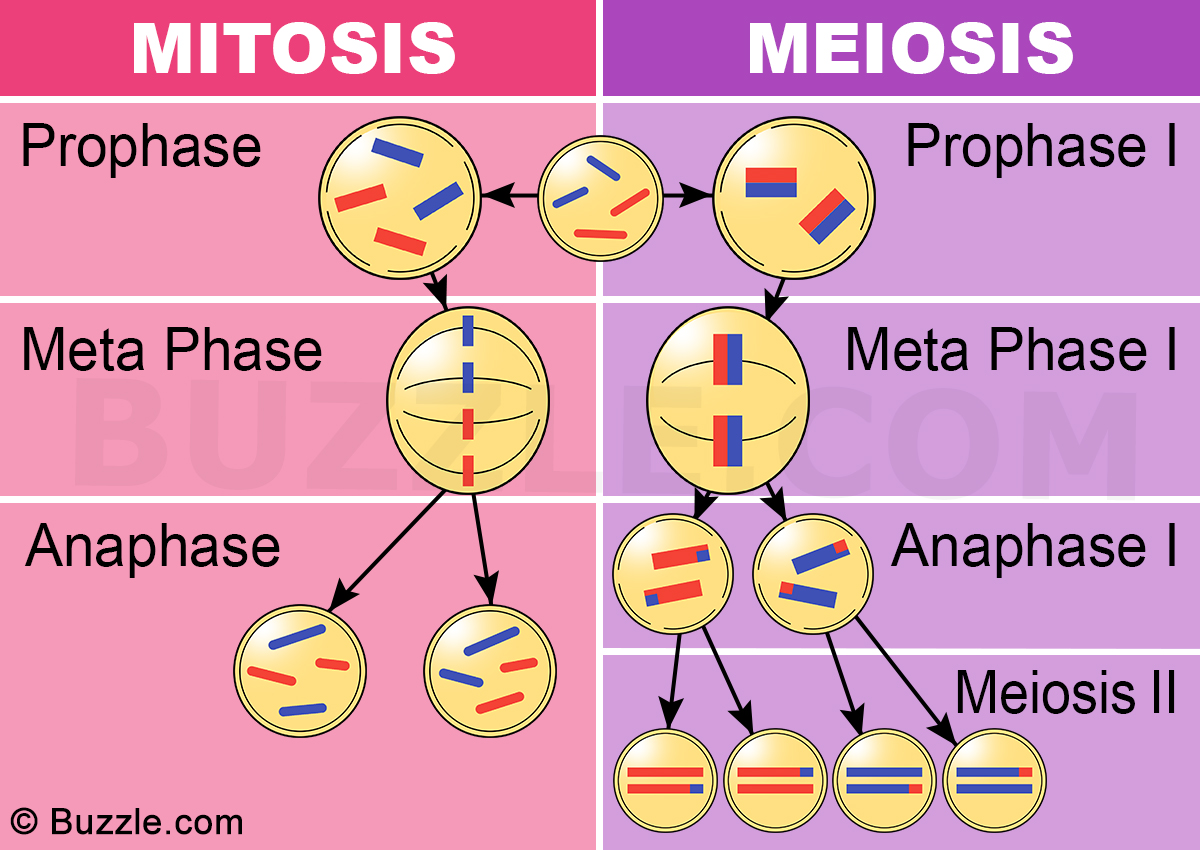
Mitosis And Meiosis
Iron front liberation 1944 trainer 1.65. Cytokinesis is the division of the cell's cytoplasm. It begins prior to the end of mitosis in anaphase and completes shortly after telophase/mitosis. At the end of cytokinesis, two genetically identical daughter cells are produced. These are diploid cells, with each cell containing a full complement of chromosomes.
Cells divide and reproduce in two ways, mitosis and meiosis. Mitosis results in two identical daughter cells, whereas meiosis results in four sex cells. Below we highlight the keys differences and similarities between the two types of cell division.
Differences
- Mitosis
- Involves one cell division
- Results in two daughter cells
- Results in diploid daughter cells (chromosome number remains the same as parent cell)
- Daughter cells are genetically identical
- Occurs in all organisms except viruses
- Creates all body cells (somatic) apart from the germ cells (eggs and sperm)
- Prophase is much shorter
- No recombination/crossing over occurs in prophase.
- In metaphase individual chromosomes (pairs of chromatids) line up along the equator.
- During anaphase the sister chromatids are separated to opposite poles.
- Meiosis
- Involves two successive cell divisions
- Results in four daughter cells
- Results in haploid daughter cells (chromosome number is halved from the parent cell)
- Daughter cells are genetically different
- Occurs only in animals, plants and fungi
- Creates germ cells (eggs and sperm) only
- Prophase I takes much longer
- Involves recombination/crossing over of chromosomes in prophase I
- In metaphase I pairs of chromosomes line up along the equator.
- During anaphase I the sister chromatids move together to the same pole.
- During anaphase II the sister chromatids are separated to opposite poles.
Similarities
- Mitosis
- Diploid parent cell
- Consists of interphase, prophase, metaphase, anaphase and telophase
- In metaphase individual chromosomes (pairs of chromatids) line up along the equator.
- During anaphase the sister chromatids are separated to opposite poles.
- Ends with cytokinesis.
- Meiosis
- Diploid parent cell
- Consists of interphase, prophase, metaphase, anaphase and telophase (but twice!)
- In metaphase II individual chromosomes (pairs of chromatids) line up along the equator.
- During anaphase II the sister chromatids are separated to opposite poles.
- Ends with cytokinesis.
This page was last updated on 2017-05-17
Mitosis and meiosis are similar processes in that they both result inthe separation of existing cells into new ones. They differ, however, in theirspecific processes as well as in their products. The reason for thesedifferences lies in the difference in the class of cells that each processcreates. Mitosis is responsible for reproducing somatic cells and meiosisis responsible for reproducing germ cells.
In this section, we will reviewthe major differences between these two processes and explain why suchdifferences exist.MitosisIn single-cell organisms, mitosis is the only form of cellular reproduction.One round of mitosis yields two genetically identical cells. In bacteria, thisprocess results in an entirely new, independent organism.
This is classified asasexual reproduction because it does not require sex for the creation of neworganisms. In multi-cellular organisms, like ourselves, mitosis only occurs insomatic cells, which comprise all cells in an organism excluding germcells.Figure%: Events of mitosis.Cells that undergo mitosis duplicate their chromosomes, resulting in cells withtwo times their normal haploid or diploid numbers (4 Nchromosomes).
Newly-synthesized chromosomes remain closely associated withtheir like-chromosome. These two identical chromosomes are called sisterchromatids. Once duplicated, sister chromatids separate such that one copy ofeach chromosome lines up on opposite ends of the cell. The cell then pinches inthe center until it breaks into two different cells. A nucleus then formsaround the chromosomes in each cell to yield two cells with the same originalnumber of chromosomes as the preexisting cell.MeiosisThere are two major differences between mitosis and meiosis. First, meiosisinvolves not one, but two cell divisions. Second, meiosis leads to theproduction of germ cells, which are cells that give rise to gametes.
Germcells are different from somatic cells in a critical way. Whereas somatic cellsare diploid, meaning they have two copies of each chromosome, germ cells arehaploid.
The haploid nature of germ cells is vital to the process of sexualreproduction.There are two different sex cells or gametes: sperm and eggs. Males producesperm and females produce eggs. Because they are produced from germ cells,gametes are likewise haploid.
In order to create a new individual via sexualreproduction, a sperm cell needs to activate an egg by joining it in afertilization process. When these two haploid cells unite, a diploid cellresults. This specialized cell can then develop into a new individual. Thesexual reproductive process just described ensure that the resulting offspringwill have an equal maternal and paternal genetic contribution.Figure%: Events of meiosis.As we mentioned earlier, higher-order cells contain homologous pairs ofchromosomes-one from the father and the other from the mother. In meiosis, asin mitosis, the maternal and paternal homologues are replicated during DNAreplication yielding two pairs of sister chromatids.
After the first celldivision, each of the resulting cells contains a pair of sister chromatids—-onematernal pair and the other paternal. Unlike mitosis, meiosis does not endafter one division; it continues with a second cell division. Halo halo. In this division,the sister chromatids are separated yielding four total haploid cells.The specific events that occur during both mitosis and meiosis are much morecomplex than described above and will be covered in depth in the followingSparkNote on cell reproduction. This is just meant to be an introduction to thegeneral concepts behind the two processes and as a means to introduce terms thatwill ease understanding of more complex explanations.